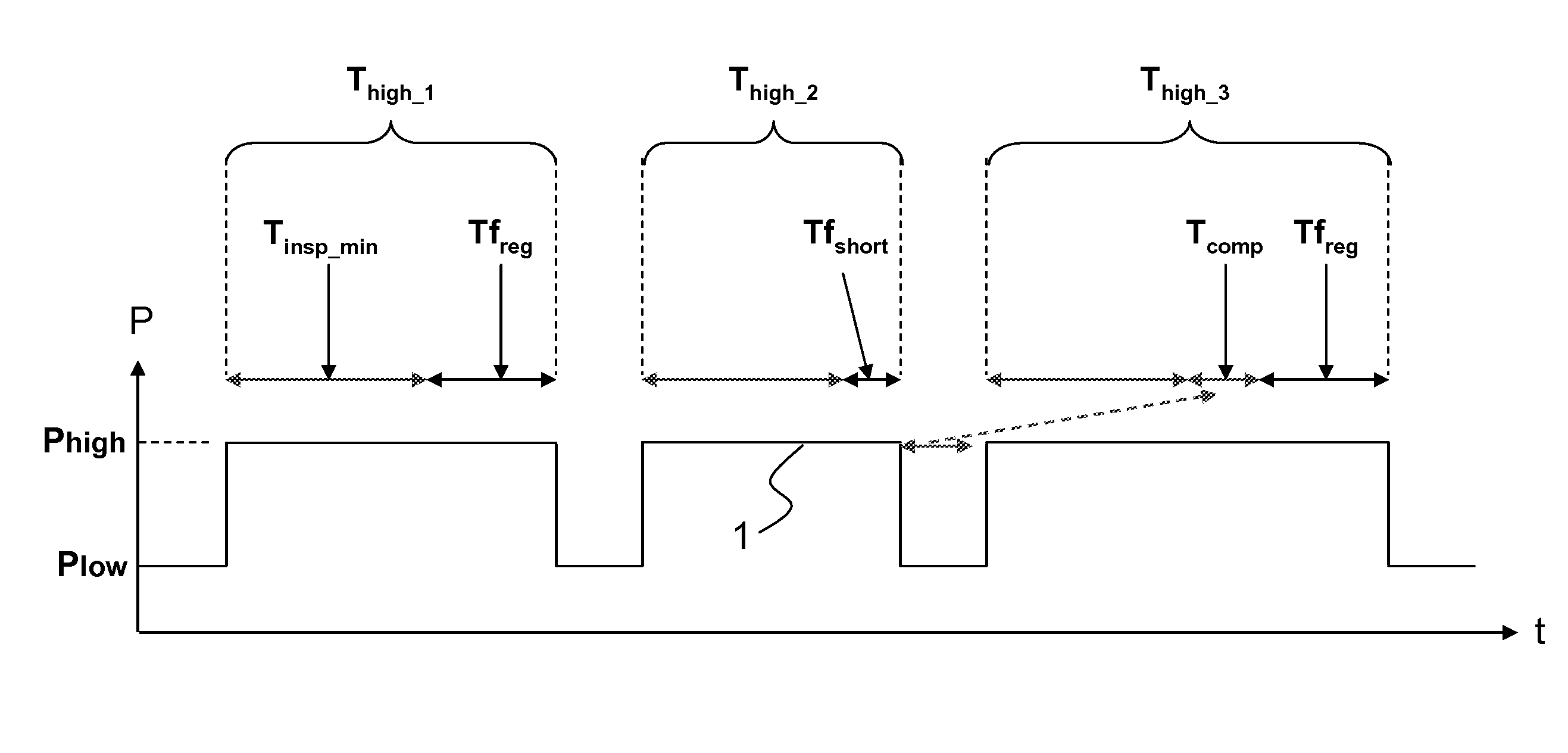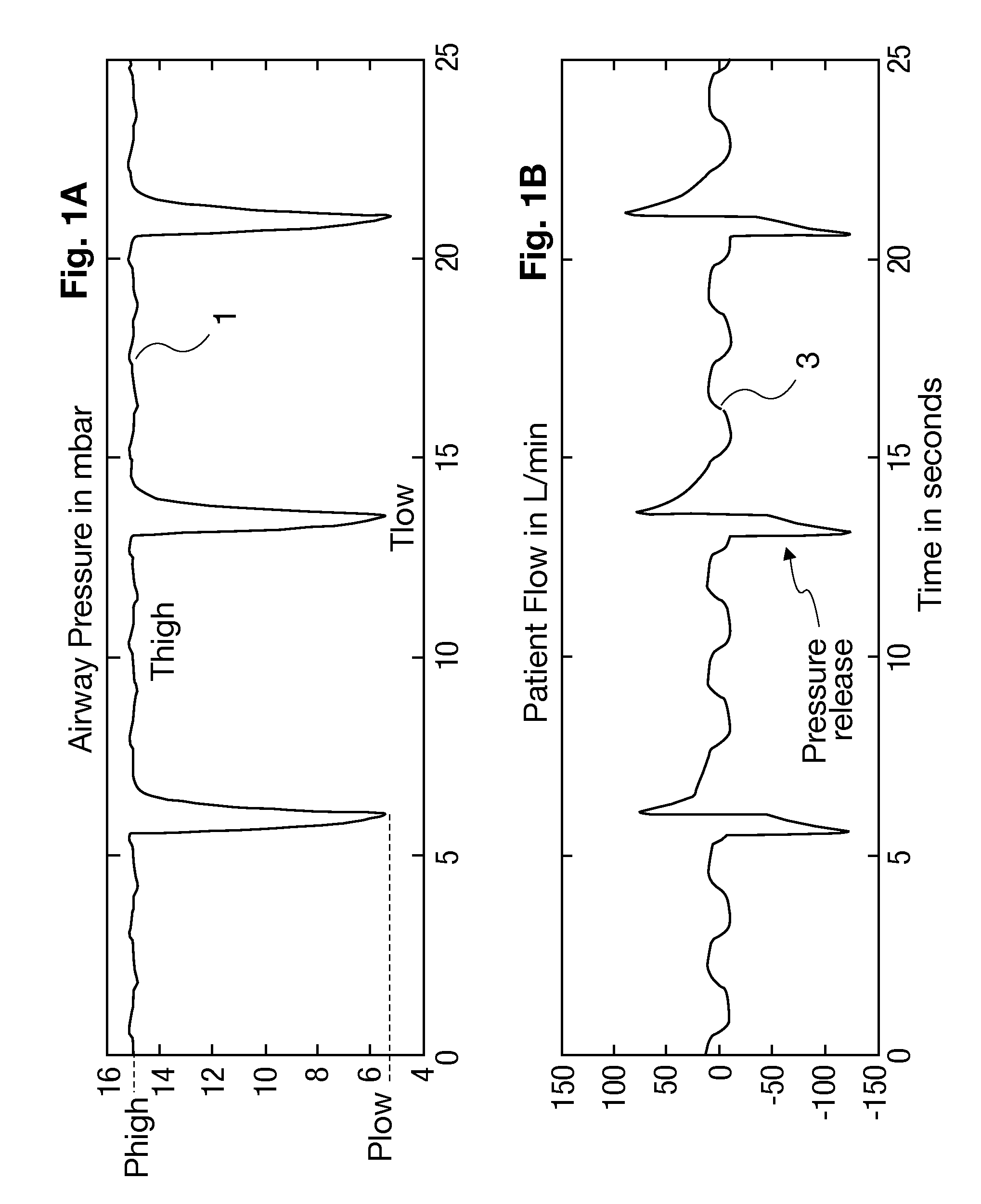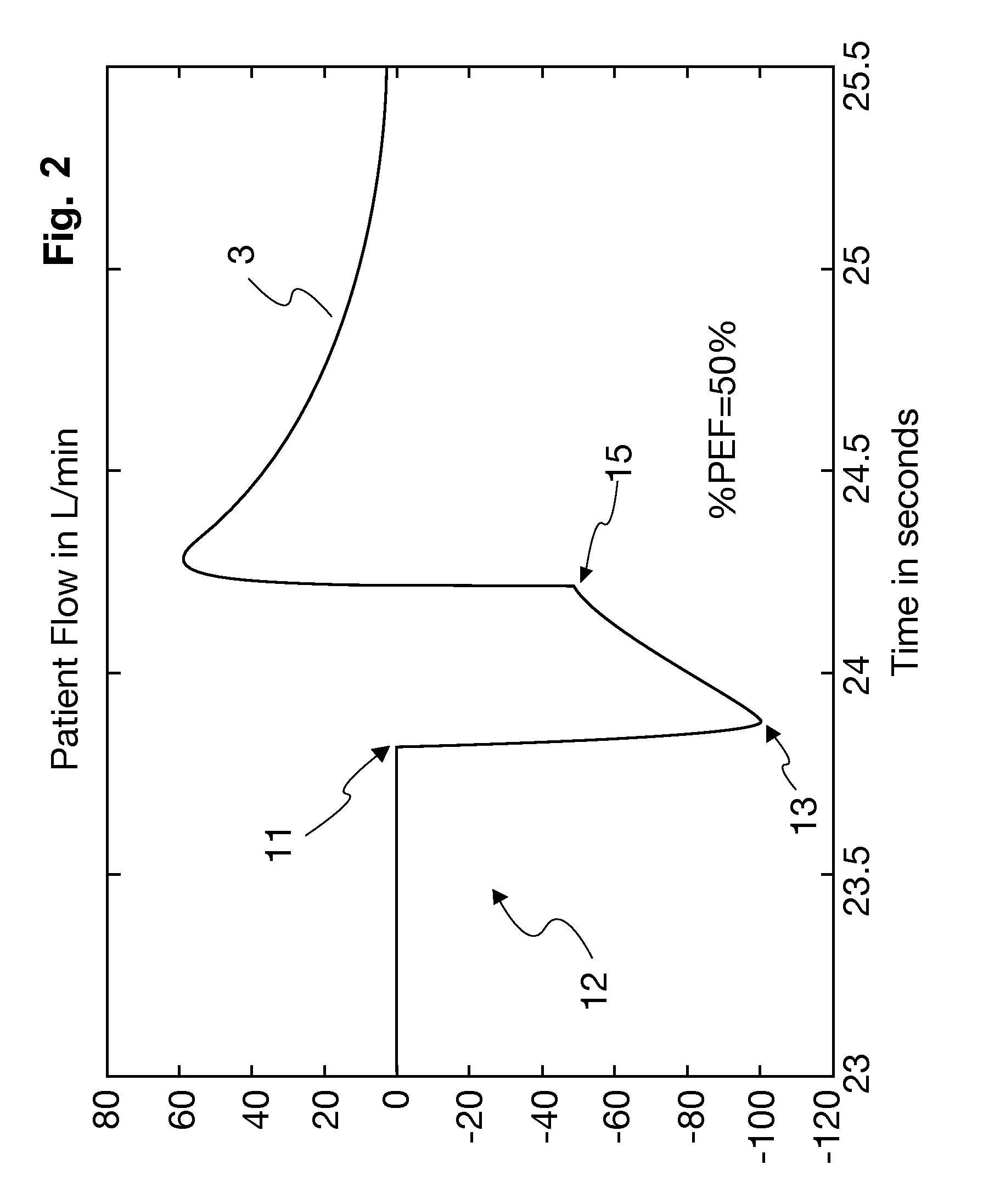Process for operating a respirator and/or anesthesia device in the APRV mode with the %PEF criterion and a device operated correspondingly
a respirator and anesthesia technology, applied in the direction of respirators, operating means/releasing devices, diagnostic recording/measuring, etc., can solve the problem of not preventing an excessive removal of air from the lungs, etc., to improve oxygenation, prolong the inspiration time, and improve the effect of oxygenation
- Summary
- Abstract
- Description
- Claims
- Application Information
AI Technical Summary
Benefits of technology
Problems solved by technology
Method used
Image
Examples
Embodiment Construction
[0024]Referring to the drawings in particular, FIGS. 1A and 1B show an example of respiration in the APRV mode in a simulation, where FIG. 1A shows an airway pressure 1 in mbar, and FIG. 1B shows the corresponding patient flow 3 in L / minute, each over time. The airway pressure 1 varies here between an upper pressure level Phigh during a high pressure period and a lower pressure level Plow during a low pressure period. The pressure level Phigh is applied for this over a duration Thigh, and the lower pressure level Plow over a duration Tlow. One of three pressure release phases shown is marked with an arrow in the lower view in FIG. 1B.
[0025]FIG. 2 shows the patient flow 3 over time in a simulation of an APRV respiration. FIG. 2 shows a point in time 11 at which a pressure release phase 12 is started. FIG. 2 shows, furthermore, a point in time 13, at which a maximum flow—equaling 100 L / minute in this case—is reached. In addition, a point in time 15, at which the pressure release phase...
PUM
 Login to View More
Login to View More Abstract
Description
Claims
Application Information
 Login to View More
Login to View More - R&D
- Intellectual Property
- Life Sciences
- Materials
- Tech Scout
- Unparalleled Data Quality
- Higher Quality Content
- 60% Fewer Hallucinations
Browse by: Latest US Patents, China's latest patents, Technical Efficacy Thesaurus, Application Domain, Technology Topic, Popular Technical Reports.
© 2025 PatSnap. All rights reserved.Legal|Privacy policy|Modern Slavery Act Transparency Statement|Sitemap|About US| Contact US: help@patsnap.com



